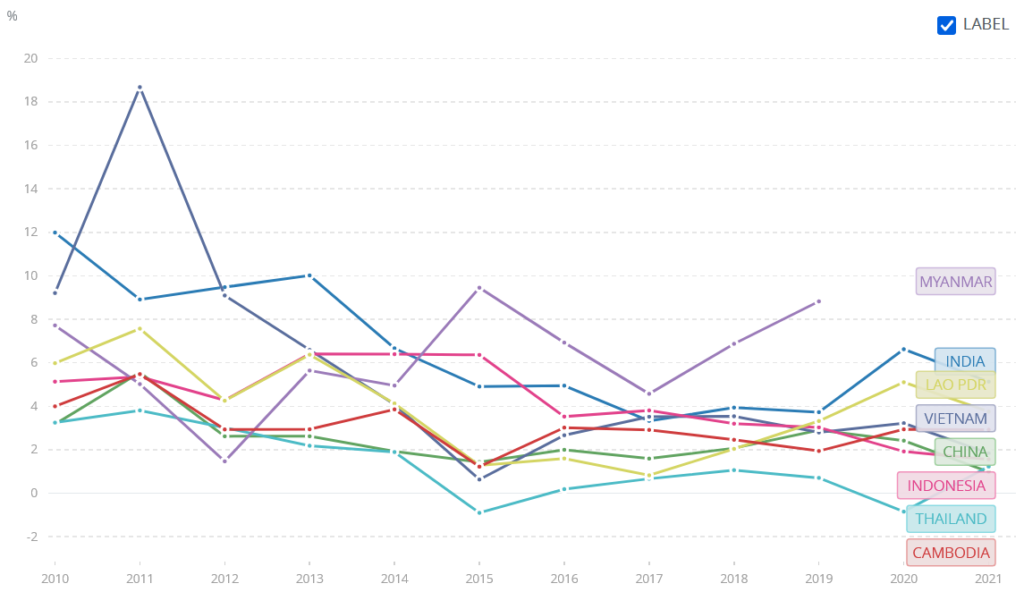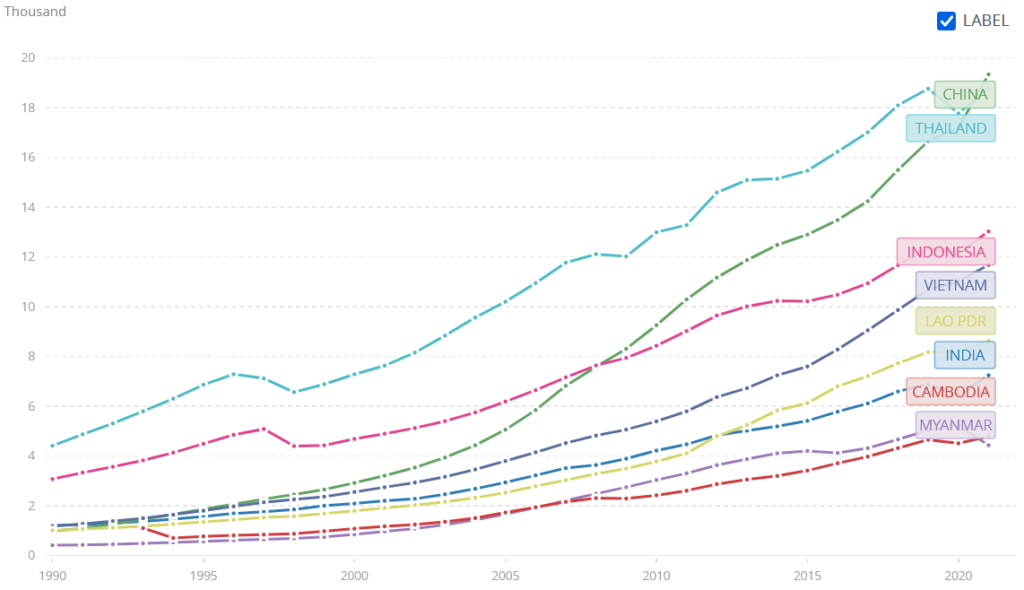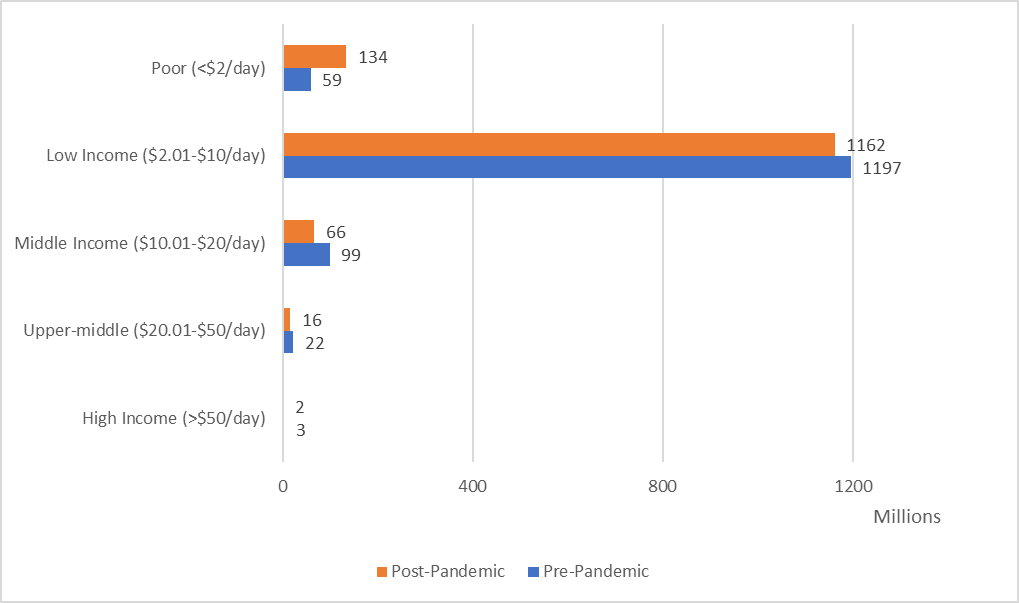In the coming months, we will be examining the economic prospects and geopolitical implications of several of the world’s growing markets.
Let’s play a quick game of “Guess that Country” – boasting a population of just over 1.4 billion people, this nation has grown from its role as a regional power in Asia to become an international player. With a stunning average GDP growth rate in excess of 5% in the past 10 years, this country has drawn international investment as one of the world’s fastest-growing consumer markets. It’s signature “Made in _____” label initiative indicates its interest in being the global provider of manufacturing.
The country is, of course, India.
India is a place of seeming contradictions – the country is in the middle third of nations in terms of extreme poverty (1-3% of the population), but nearly 25% of the country lives on less than $5.50 per day. The country ranks 5th overall in terms of nominal GDP ($3.469 trillion), but 139th in per capita terms ($2,466). India holds the presidency of the Group of 20 (G20) this year, is a member of the Quadrilateral Security Dialogue (QUAD), and also played host to the Voice of the Global South Summit in January, indicating its perceived role in both the global developed economy and as leader of the world’s emerging economies. The country has a history of democracy since 1950, yet has been plagued in recent years by authoritarian leanings from Prime Minister Narendra Modi and alignments with Russia and China, including non-condemnation of the Russian invasion of Ukraine. India boasts of its pluralism with over two thousand unique ethnic groups, yet the persistent persecution of religious minorities, especially Muslims, cannot be ignored. For these and an abundance of other reasons, India stands as the crossroads of the global East, West, and South, displaying the characteristics of each while conforming to none.
To achieve its self-proclaimed goal, India’s challenge is to slay a two-headed tiger. The first head is the danger of economic stagnation, and the second the danger of illiberalism. Each poses a threat to both India and the world, and neither can be defeated alone.
The Economic Head
Despite its impressive headline GDP figure, India’s economy is dangerously fragile. The country faces a severe labor shortage, with only 46% of the population either employed or looking for work. The figures are even worse for women, with only 21% of women in the country active in the labor market. Anecdotes of 357-to-1 applicant-to-job ratios in certain sectors only adds to the labor malaise, which is acute among young people.
Some of this can be attributed to India’s industry mix. The service industry comprises nearly 53% of India’s economy, while manufacturing makes up 16%. India’s 2% share of global exports is on par with nearby Vietnam despite the former’s 14-to-1 population advantage. The agricultural sector, typically the last resort of urban job-seekers, employs nearly 45% of India’s workers, while manufacturing employs about 12% of the workforce. Approximately 55% of India’s workers are self-employed, but less than a quarter of these individuals draw a regular wage or salary.
All of this points to a fundamental issue at the core of India’s economy – its growth has not been accompanied by new jobs. With 7-9 million new jobseekers arriving in the market every year, India will need to create 200 million new jobs over the next decade to meet demand. But the services industry, which has created the lion’s share of India’s growth, does not create many jobs, while the labor-intensive sectors are either not large enough (manufacturing) or do not contribute enough to growth (agriculture).

This disparity between prosperity and employment for many of India’s people is reflected in its socioeconomic conditions. In terms of purchasing power, India’s per capita GDP in 2021 came in around $7,242 – behind Uzbekistan ($8,497), Bolivia ($8,846), Iraq ($9,846), Tunisia ($11,282), and Mongolia ($12,818).

Data from Pew Research indicates that the contraction of India’s economy during the Covid pandemic accounted for 60% of the global increase of poverty in 2020. 94% of India’s population lives on less than $10 per day, even after adjusting for the local cost of living.

The Cultural Head
To accompany its economic woes, India has also seen a rise of illiberalism within its borders. A large portion of this rise can be assigned to Prime Minister Narendra Modi, whose ambitions for Indian ascendency have put India on the path to authoritarian rule. His particular brand of Hindu nationalism has led to harassment of the press, non-governmental organizations, and other government critics. This led international democracy watchdog Freedom House to downgrade India’s status to “partially free democracy” from “free democracy” in 2021. Modi’s Bharatiya Janata Party (BJP) is an offshoot of the right-wing Rashtriya Swayamsevak Sangh (RSS), which has a long history of opposing the integration of non-Hindu minorities. In 2002, under his leadership of the Gujarat state, an attack on a train led to the mob execution of hundreds of Muslims, with Modi’s regional government doing little to prevent the pogrom or aid the refugees. While India’s Supreme Court did not find Modi responsible for the violence, the episode serves as a stark example of Modi’s Hindu nationalism, especially in the context of India’s increasingly anti-Islamic zeitgeist.
Neither is Modi’s persecution of perceived foes limited to religious majoritarianism – In late March, a local court sentenced opposition leader Rahul Gandhi to two years in prison for allegedly making offensive comments about Modi’s surname during a speech in 2019. The complaint was brought by members of Modi’s BJP and the conviction carries a permanent disqualification from the nation’s parliament for six years. Interestingly, under Indian law the threshold for disqualifying a member of parliament is a two-year prison sentence, the exact sentence handed down on Gandhi for his alleged defamation. The move has been seen as political persecution of the opposition Congress party and has sparked protests.
Slaying the Tiger
The road ahead of India is challenging – it must determine how to lift its population out of poverty and unemployment while maintaining a grasp on liberalism to ensure the preservation of its rich culture. The opportunity to accomplish both of these goals may come from India’s northern neighbor – China. It is no secret that the Chinese Communist Party sees China as a rival and ultimately a replacement to the US, a posture which has led the West to begin decoupling its economies from China. India has the opportunity to swoop in and claim market share as China’s market share diminishes.
Already, Apple has announced that it will begin making its newer phones in India rather than China. The country’s large English-speaking population, generally democratic values, and low costs provide an attractive entry point for multinational corporations. However, such an outcome is far from guaranteed. The schism between China and the West has grown for decades, yet India has claimed little of the potential spoils. Other nations in southeast Asia (such as Vietnam) have seen far greater benefit, despite their smaller size. And India’s continued slide towards illiberalism may quickly push it beyond the ideological alignment sought by Western nations in the wake of the democratic-authoritarian divide.
Nevertheless, India remains resilient. One of the world’s oldest and most diverse civilizations will not be easily defeated, even by the scourge of poverty. And India’s young people continue to pursue prosperity in the face of hardship. The West should take careful note of India’s rise – the nation has the potential to grow up into a bastion of freedom and prosperity, but only if it is carefully nurtured and steered away from tyranny. Then, and only then, can India take its proper place as the crossroads of the globe.
